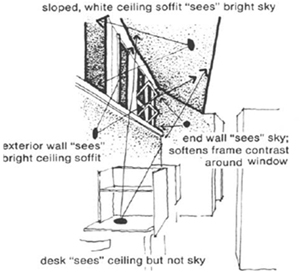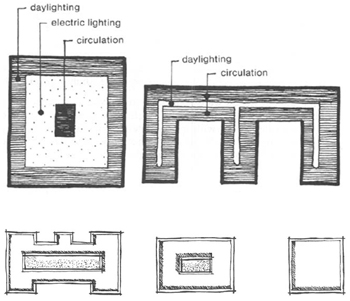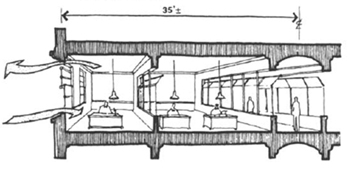 |
RECORD ARCHITECTURAL CONSTRAINTS |
EXISTING BUILDING ENVELOPE
Building geometry and spatial arrangement should promote the distribution of daylight for sustainable design. Massing and configuration of apertures in the buildings should be such that maximum number of spaces are near daylight. The paragraphs below show strategies to maximize the quantity and distribution of daylight within a building.
1. Articulation of spaceThe surfaces inside a building should be arranged so as to direct daylight to the user. In the example on the right of the Mount Angel library by Alvar Aalto, the sloped, white ceiling soffit diffuses the daylight from the clerestory windows onto the walls and the desk. This results in a well-lit environment, with reduced brightness contrast to the sky [1]. |
|
2. Building massingNarrow forms with exterior openings are easiest to illuminate with natural light. To use daylight effectively in multistory buildings, narrow plans ensure that work areas are daylit. Hence, "finger" shaped plans are desirable if a straight plan is not possible [3]. |
|
3. Building widthTypical pre-1950 office building (half section) allowed side light and ventilation penetration through transparent partitions and open transoms as shown in the image on the right. The "15/30" rule of thumb can be used in buildings, where 15-foot perimeter zone is task lit primarily by daylight, while the next fifteen partially daylit with supplemental electric lighting [5]. |
|
4. Building heightDaylight can be maximized with articulation of roof area through skylights in existing buildings. |
|
References









